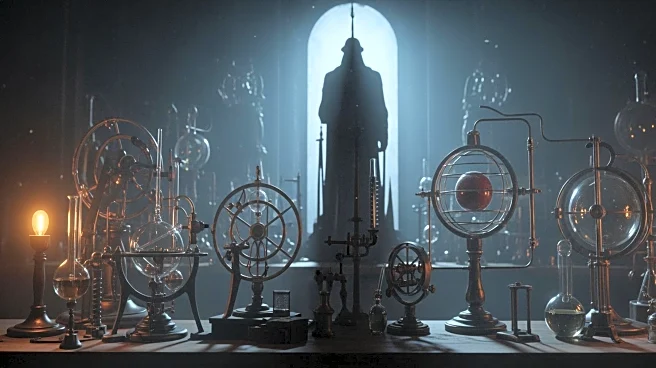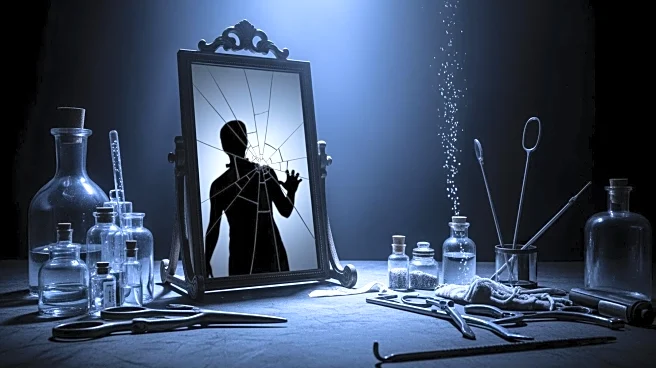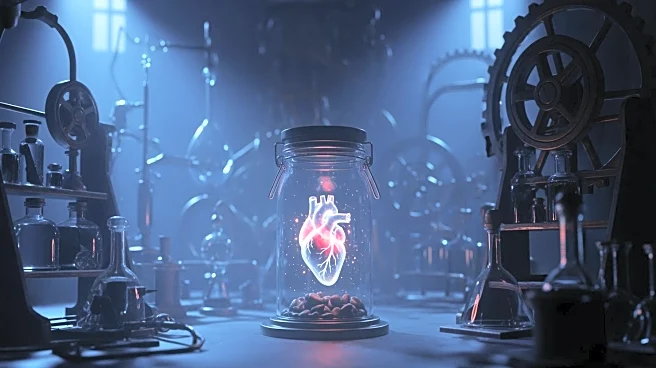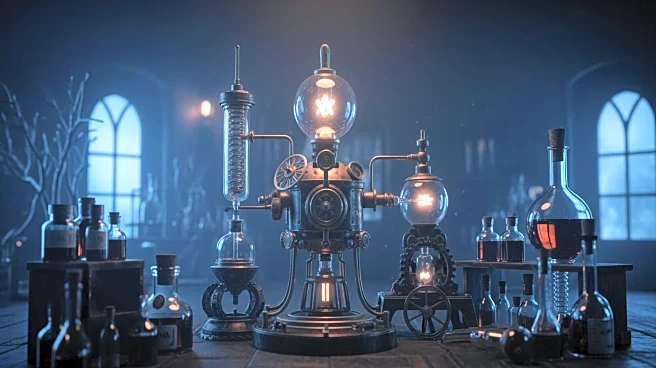What's Happening?
Guillermo Del Toro's adaptation of 'Frankenstein,' starring Oscar Isaac and Jacob Elordi, has been released on Netflix. The film, which took three decades to come to fruition, explores the creation of the creature in detail, with Del Toro focusing on anatomical
precision. The adaptation features unique elements such as the creature's movements inspired by Japanese dance and voice influenced by Mongolian throat singing. Del Toro's vision includes a cross-like apparatus for the creature, drawing comparisons to religious imagery. The film's production involved extensive makeup and design efforts, contributing to its distinct visual style.
Why It's Important?
Del Toro's 'Frankenstein' represents a significant contribution to the horror genre, offering a fresh perspective on a classic tale. By focusing on detailed craftsmanship and innovative storytelling, the film positions itself as a contender for awards-season recognition. The adaptation's unique approach may influence future horror films, encouraging directors to explore creative narratives and visual styles. Del Toro's work highlights the importance of artistic expression in cinema, potentially inspiring filmmakers to push boundaries and redefine genre conventions.
What's Next?
As 'Frankenstein' garners attention, it may lead to further collaborations between Del Toro and streaming platforms like Netflix, expanding the reach of genre films. The film's success could prompt discussions about the role of streaming services in promoting diverse and innovative content. Del Toro's adaptation may inspire other filmmakers to revisit classic stories with a modern twist, contributing to the evolution of the horror genre.
Beyond the Headlines
The film's exploration of religious and anatomical themes raises questions about the ethical dimensions of storytelling in horror. Del Toro's focus on visual and narrative innovation reflects broader cultural shifts towards more inclusive and thought-provoking cinema. As audiences engage with complex narratives, the industry may witness a transformation in how stories are told and received.













